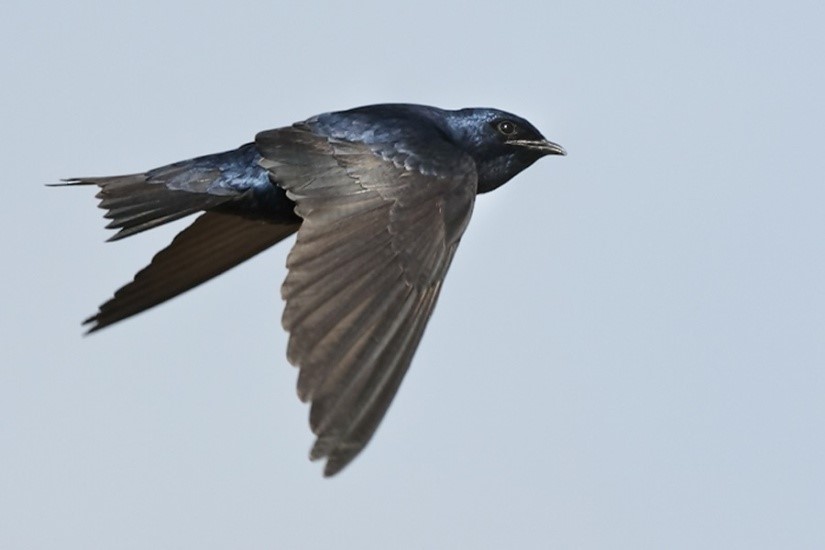

The arrival of Purple Martins each spring is eagerly anticipated across North America. By taking a close look at the birds packed onto this small isle, they hope to glean insights that can help secure the future of the entire species. He is among a dozen American and Brazilian scientists who have gathered here to observe and perform the most wide-ranging study yet of Comaru. Brazil, 2022.Ĭohn-Haft watches the birds’ restless silhouettes, his binoculars slung over his shoulder.

Purple Martins at Comaru roost at a comfortable height for researchers to gently take them in hand. Image by Dado Galdieri/Audubon. “If we can trace their movements, figure out what they’re eating, and analyze whether they’ve been contaminated by pesticides and other pollutants, we can learn something about how they’re doing down here,” he says.

Little is known about the challenges Purple Martins encounter when they head south each fall. The North American breeding population is thought to have decreased 25 percent since 1966 in some areas the drop has been even steeper, and in others the birds have disappeared altogether. “It is the single biggest window we have into what Purple Martins are doing in South America in the winter,” he says. Mario Cohn-Haft, the curator of birds at the National Institute of Amazonian Research in Manaus, believes the island could be a key to understanding the species’ steady decline as well. Comaru could be the staging ground, or launchpad, the scientists suspect, for many of 9.3 million Purple Martins that funnel from South to North America. Its significance isn’t just its size, however, but also the pivotal role the roost may play in the bird’s long-distance migration. Host to a concentration of roughly 250,000 birds between February and April, it’s one of the largest Purple Martin roosts ever discovered. The tiny island-just 12 acres, or slightly larger than Yankee Stadium-attracts an outsize number of the shimmery swallows. Donate any amount today to become a Pulitzer Center Champion and receive exclusive benefits! In a matter of minutes the spectacle has ended, leaving the sky still but for the emergence of stars.Īs a nonprofit journalism organization, we depend on your support to fund journalism covering underreported issues around the world. More birds pour down, encrusting the trees, their clamorous calls rising. With a woosh, the birds drop like a shower of black sleet against the crepuscular horizon, alighting in the canopy just a few feet from the boats. Suddenly, one throng forms a synchronous swirl.

Then a flock amasses into avian clouds, the birds’ tempestuous movements like particles in Brownian motion. The island, known locally as Ilha do Comaru, is submerged as it is every year in March, and only the trees’ crowns poke above the surface.Ī handful of Purple Martins dart by, their notched tails and angular wings splitting the heavy air. Like other trees nearby, Macacarecuia tolerate the river’s seasonal flooding. Silhouetted against twilit lavender and golden clouds, the crown of a Macacarecuia tree droops with fist-size seedpods. Just off a splinter of land sitting midstream in Brazil’s Rio Negro, a crew of scientists in two boats intently scan the sky. Radio tags affixed to Purple Martins (left) will help researchers track their journeys north. Studying it could provide clues to the species’ decades-long decline. Vast numbers of the swallows pass through one roost in the heart of the Amazon before winging their way to North American birdhouses.


 0 kommentar(er)
0 kommentar(er)
